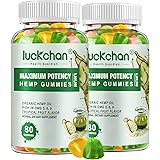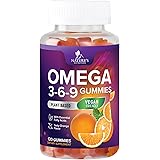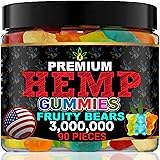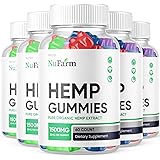Every dog parent shares a similar dream: to spend as many precious years as possible with their beloved canine companion. The thought of a dog living to an astonishing 29 years, like Bluey, the Australian Cattle Dog highlighted in the video above, sparks hope and begs the question: could your dog truly defy average lifespans and live a long, fulfilling life, perhaps even to 30? While reaching such an advanced age remains incredibly rare, the good news is that scientific insights, combined with dedicated care, can significantly increase the odds of your dog enjoying more years and a higher quality of life. The journey toward enhanced dog longevity begins with understanding and implementing key strategies.
The quest for a longer, healthier life for your dog is not just a wishful dream; it’s a goal supported by a growing body of scientific research and the collective wisdom of veterinarians, animal scientists, and experienced dog parents. Just as Joey DiFrancesco shared in the video, his own dog Roxy living to 15 years was a testament to the power of a mindful lifestyle. Many factors influence a dog’s lifespan, from genetics to sheer luck. However, there are significant levers you, as a dog owner, can pull to stack the odds in your favor. Let’s delve deeper into these science-backed methods that can truly make a difference, giving your cherished pet every possible extra year.
Understanding Dog Lifespans: Setting Realistic Expectations for Dog Longevity
Before diving into specific strategies, it’s helpful to establish a baseline for typical dog lifespans. The average canine lives between 10 and 13 years, but this figure can vary dramatically based on breed and size. Imagine having a giant breed like a Great Dane or an Irish Wolfhound; their magnificent presence, unfortunately, often means a shorter journey, typically seven to nine years. On the other end of the spectrum, smaller breeds such as Dachshunds, Toy Poodles, and Chihuahuas regularly push past 15 years, sometimes even reaching 18 or more. Mid-sized and popular family breeds like Labrador Retrievers, Golden Retrievers, and German Shepherds generally fall into the 10 to 12-year range. Genetics undeniably set a foundation, but it’s the daily lifestyle choices you make that truly hold the potential to add significant years to your dog’s life, regardless of their genetic predisposition.
The Cornerstone of Canine Health: Keeping Your Dog Lean
Perhaps the most impactful, yet often overlooked, strategy for extending your dog’s lifespan is simply maintaining a healthy, lean body weight. The science on this is compelling. A landmark 14-year study conducted by the University of Pennsylvania, which meticulously tracked Labrador littermates, revealed a striking finding. Dogs that were consistently fed 25% fewer calories than their ad libitum-fed siblings lived an average of 1.8 years longer. This isn’t a small margin; it represents almost two additional birthdays, simply from diligent portion control.
It’s easy to fall into the habit of overfeeding, often driven by love and a desire to spoil our pets. Those pleading “sad eyes” can be incredibly persuasive! However, those extra calories, while feeling like an act of affection in the moment, can actually diminish your shared time in the long run. Excess weight doesn’t merely reduce a dog’s mobility; it significantly elevates the risk of numerous serious health issues, including painful arthritis, debilitating diabetes, heart disease, and even certain types of cancer. A lean dog isn’t just healthier; they tend to be more agile, more playful, and more engaged with their environment, enhancing their overall quality of life. Achieving this involves consistent portion control during meals, carefully limiting treats, and regularly monitoring your dog’s body condition score.
Decoding Optimal Canine Nutrition: The Fuel for a Longer Life
Beyond calorie count, the quality of what fills your dog’s bowl is paramount. Consider Bluey, the nearly 30-year-old Australian Cattle Dog, whose owner reported feeding him fresh farm food rather than processed kibble. While this single anecdote doesn’t constitute scientific proof, it aligns with a growing understanding that diet quality plays a critical role in dog health and longevity.
The world of dog food is diverse and often confusing. Kibble offers affordability, convenience, and generally provides a “complete and balanced” nutritional profile. However, the quality within kibble brands varies immensely. If you opt for kibble, it’s wise to select brands that practice transparent ingredient sourcing, clearly name protein sources (e.g., “chicken” instead of vague “meat meal”), and provide third-party testing results for contaminants like mycotoxins and heavy metals. Bonus points go to companies that employ a veterinary nutritionist on staff. Alternatively, fresh food diets, whether commercially prepared or home-cooked, offer whole food ingredients with fewer fillers. A Belgian owner-reported survey of over 500 dogs indicated an association between home-prepared fresh diets and nearly three extra years of life compared to kibble-fed dogs. However, fresh food diets require careful balancing to ensure all essential nutrients are present in the correct proportions, as nutritional imbalances can be detrimental. Raw diets, while favored by some for palatability and nutrient retention, remain highly controversial among veterinarians due to concerns about bacterial contamination and potential nutrient deficiencies. The consensus among veterinary groups, such as the World Small Animal Veterinary Association, is clear: every dog needs a complete and balanced diet. This means providing all essential nutrients – proteins, fats, carbohydrates, vitamins, minerals, and water – in the precise amounts and ratios necessary for optimal health, laying the foundation for long-term vitality.
Elevating Wellness with Targeted Supplemental Nutrition
While a complete and balanced diet forms the nutritional bedrock, strategic supplementation can elevate your dog’s wellness beyond the baseline, offering targeted support for the vital systems that influence longevity. Think of supplements as extra reinforcements for the heart, brain, immune system, joints, and even stress resilience. Science supports the efficacy of several key supplements.
Omega-3 fatty acids, for instance, are well-researched for their anti-inflammatory properties. Studies show they can significantly improve outcomes for dogs with heart disease, reduce arthritis pain, decrease the need for pain medication, and even support kidney function. Antioxidants are another powerful tool in the longevity arsenal. A study published in the British Journal of Nutrition demonstrated that a specific blend of antioxidants, B vitamins, fish oil, and arginine significantly improved memory and learning tasks in older dogs after just six months of supplementation. This suggests targeted nutrients can help senior dogs maintain sharper cognitive function for longer. Emerging research also highlights the potential benefits of functional mushrooms like turkey tail and lion’s mane for boosting immune strength and cognitive health. Furthermore, hemp-based supplements, particularly those containing CBD, are gaining traction for their potential to support joint health, mobility, and emotional balance. Many dog parents, like Kathy with her dog Garth, have witnessed firsthand how a holistic routine, including natural support, can help dogs defy grim prognoses and enjoy vibrant, extended lives. Imagine seeing your once slow-moving senior dog regain their playful spirit, enjoying longer walks and engaging with toys again—it’s a testament to the power of integrated care.
Fueling Body and Mind: The Power of Movement and Enrichment
A dog’s longevity isn’t solely about what they eat or supplement; it’s also profoundly influenced by their physical and mental engagement. Bluey, the exceptionally long-lived Australian Cattle Dog, spent over two decades actively working sheep and cattle. This consistent daily activity is a powerful driver of long-term health. Regular exercise is crucial for protecting cardiovascular health, strengthening muscles, maintaining joint mobility, and overall systemic well-being. Think about a dog’s natural instincts; they are built to move, explore, and interact with their environment. Keeping them physically active, whether through walks, playtime, or even swimming, directly contributes to their vitality.
What often gets overlooked, however, is the equally critical need for mental exercise. A 2012 study underscored this point, finding that senior dogs provided with environmental enrichment – activities like puzzle feeders, regular training sessions, and interactive games – demonstrated better cognitive function and a slower rate of age-related decline compared to their counterparts without such stimulation. Just as a human mind needs puzzles and learning, a dog’s brain thrives on new challenges. Simple scent games, where you hide treats around the house, or even just a few minutes of daily training, can keep your dog’s mind sharp and engaged. Imagine your dog, even in their senior years, eagerly sniffing out a hidden toy or mastering a new trick; this mental agility is a key component of their overall wellness. Movement keeps the body strong, and enrichment keeps the brain sharp; together, they form one of the most potent, and often free, longevity tools available to dog parents.
The Unsung Hero: Proactive Veterinary Care and Prevention
Even the fittest and mentally sharpest dogs can harbor hidden health issues. This is why consistent, preventive veterinary care is not just beneficial—it’s absolutely essential for adding years to your dog’s life. Consider dental disease: it’s far more than just bad breath or a sore mouth. Research indicates a strong association between poor oral health and systemic inflammation, leading to detrimental changes in vital organs like the heart, liver, and kidneys. Regular toothbrushing at home, combined with professional dental cleanings as recommended by your vet, is a proven method to mitigate these risks.
Routine checkups are equally critical. Banfield Pet Hospital’s extensive analysis of millions of dogs conclusively showed that consistent preventive care significantly reduces the risk of serious diseases such as parvovirus, heartworm, and indeed, dental disease. While some dog parents might dread vet visits, especially those who prefer a holistic approach, it’s crucial to understand that holistic care is not “anti-vet.” Rather, it’s about integrating all aspects of your dog’s well-being—diet, supplements, exercise, enrichment, and modern preventive medicine—into a comprehensive strategy. As one veterinarian wisely noted, “What takes dogs too soon isn’t always age – it’s what we miss.” Prevention quietly saves more lives and offers a better quality of life than almost any other single intervention. It’s about catching potential problems early, often before they manifest into severe, irreversible conditions.
The Most Powerful Ingredient: The Human-Animal Bond
We’ve explored diet, supplements, movement, enrichment, and preventive vet care, each a vital piece of the longevity puzzle. Yet, there’s one factor that science struggles to fully quantify, but its impact is undeniably profound: the unique bond you share with your dog. Dogs don’t just need calories or exercise; they fundamentally need us. And the science, while perhaps not fully encompassing its emotional depth, certainly supports its physiological benefits.
Studies have shown that positive owner-dog interactions lead to a reduction in cortisol, the body’s primary stress hormone, in dogs. This means a strong, secure bond helps your dog stay calmer and more resilient when facing stressful situations. The fascinating reciprocity of this relationship extends to us, too. A landmark study published in the journal *Science* revealed that when dogs and their owners gaze into each other’s eyes, both experience a surge of oxytocin, often called the “bonding hormone.” This hormone is linked to lower stress levels, deeper connection, and overall well-being in humans. The profound Harvard Study of Adult Development, the longest-running study on human longevity, concluded that close relationships, not wealth or status, are the strongest predictors of a meaningful and long life. This insight resonates deeply with our connection to our dogs. The love, joy, and purpose they bring to our lives are immeasurable. When you consciously nurture that bond—through shared walks, playful interactions, quiet moments of affection, and even simple eye contact—you are not just contributing to their longevity; you may very well be enriching and extending your own life too. This powerful, mutual connection might just be the most profound secret to a long, thriving life for both you and your canine best friend.
While the dream of every dog living to 30 like Bluey remains aspirational, the pathway to a longer, healthier dog life is clear and actionable. By committing to keeping them lean, providing optimal nutrition, integrating targeted supplements, ensuring consistent movement and mental enrichment, staying proactive with veterinary care, and deeply nurturing the bond you share, you are stacking the odds for your dog’s well-being. These science-backed strategies offer not just more years, but significantly better years, filled with vitality, joy, and companionship. If you’re ready to explore high-quality, vet-formulated supplements designed to support your dog’s daily wellness, consider options like organic hemp products for mobility and emotional balance, or immunity mushroom chews crafted with powerful ingredients like turkey tail, lion’s mane, and reishi to support immune resilience every single day.











